How did Australia fires start and what is being done? A very simple guide.
- Published
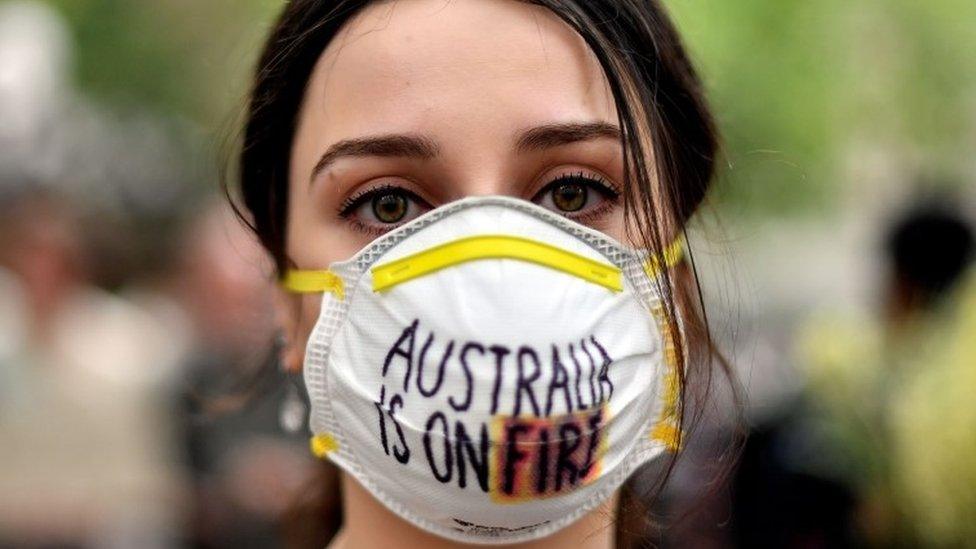
Australia is fighting one of its worst bushfire seasons, fuelled by record-breaking temperatures and months of severe drought.
Since September, at least 25 people have died and thousands have been made homeless.
Here's a very simple guide to what's going on:
Where are the fires?
Every state and territory in Australia has experienced fires this summer. But the biggest fires burn along stretches of the eastern and southern coast, where most of the population lives.
This includes areas around Sydney and Adelaide.
How big are the Australia fires?
More than 6.3 million hectares (63,000 sq km or 15.6 million acres) have been burned so far - one hectare is roughly the size of a sports field.

To put that in perspective, around 800,000 hectares in 2018 in California.
How did the Australia fires start?
Australia has always experienced bushfires - it has a "fire season". But this year they are a lot worse than normal.
Fires are usually caused by lightning strikes or accidentally by a spark - but some fires are also started deliberately.
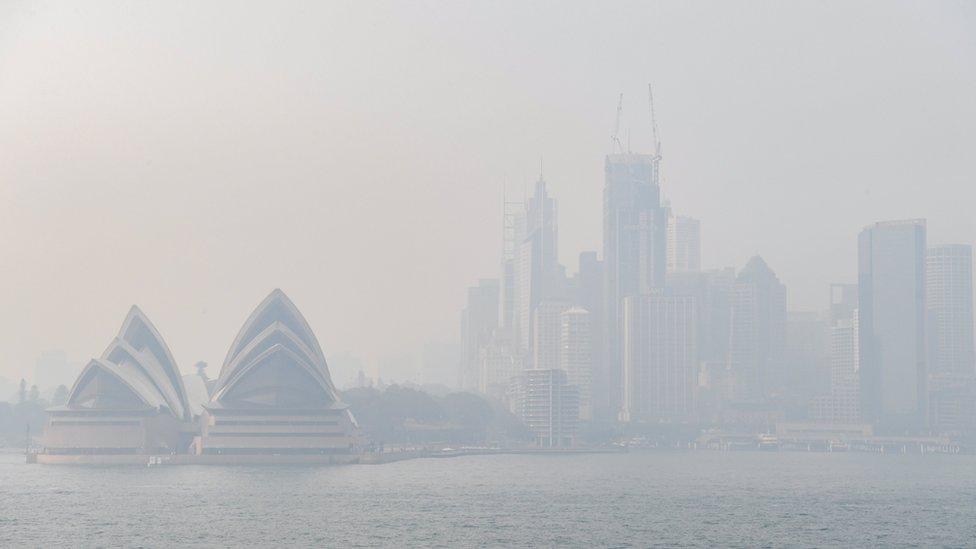
Sydney has been covered by thick smoke from bushfires outside of the city
Are the Australia fires caused by climate change?
This year a natural weather phenomenon known as the Indian Ocean Dipole has meant a hot, dry spell across the country.
But the overwhelming scientific consensus is that rising levels of CO2 are warming the planet. And Australia has been getting hotter over recent decades and is expected to continue doing so.
This year, Australia twice set a new temperature record: an average maximum of 41.9C was recorded on 18 December. That comes on top of a long period of drought.
Scientists have long warned that this hotter, drier climate will contribute to fires becoming more frequent and more intense.
The more extreme weather patterns and higher temperatures increase the risk of bushfires and allow them to spread faster and wider.
How are the fires fought?
Firefighters are spraying water and fire retardant from planes and helicopters as well as from the ground.
But fighting bush fires is extremely difficult and often authorities have to focus on just stopping the spread, rather than putting the fire out.
The spread can for instance be contained by digging earth boundaries to stop the flames from spreading. The priority is saving lives.
Who is fighting the fires?
Professional firefighters are the first in line to battle the flames, but they are outnumbered by the thousands of volunteers. Three of them have died.
There's also help coming from abroad: the US, Canada, and New Zealand have sent firefighters to help.
Australia's police, military and navy are involved in rescue and evacuation efforts.
How many animals have died in the fires?
While people can flee the fires and are being evacuated if need be, the flames are devastating wildlife in the affected areas.
One study estimated that half a billion animals have died in NSW alone. Read more on how they reached that conclusion here.
But the fires don't only kill animals directly, they also destroy the habitat, leaving the survivors vulnerable even once the fires have gone. So the true scale of loss isn't yet clear.
Experts say more than 100,000 cows and sheep may also have been lost, external, which is devastating for farmers.
What is the government doing?
Each state runs its own emergency operation, but Prime Minister Scott Morrison has promised better funding for firefighting and payouts for volunteer firefighters, and an additional A$2bn ($1.4bn; £1bn) for the recovery.
"You're an idiot, mate": Australian PM Scott Morrison heckled by bushfire victims
But the national government has come under strong criticism from its opponents that it's not been doing enough against climate change.
The country is one of the world's biggest per capita greenhouse gas emitters but under international agreements it has committed itself to reduction targets.
Mr Morrison has repeatedly defended his government's stance.


Do you have any questions about the Australia fires?
In some cases your question will be published, displaying your name, age and location as you provide it, unless you state otherwise. Your contact details will never be published. Please ensure you have read the terms and conditions.
Use this form to ask your question:
If you are reading this page and can't see the form you will need to visit the mobile version of the BBC website to submit your question or send them via email to YourQuestions@bbc.co.uk, external. Please include your name, age and location with any question you send in.
- Published31 January 2020
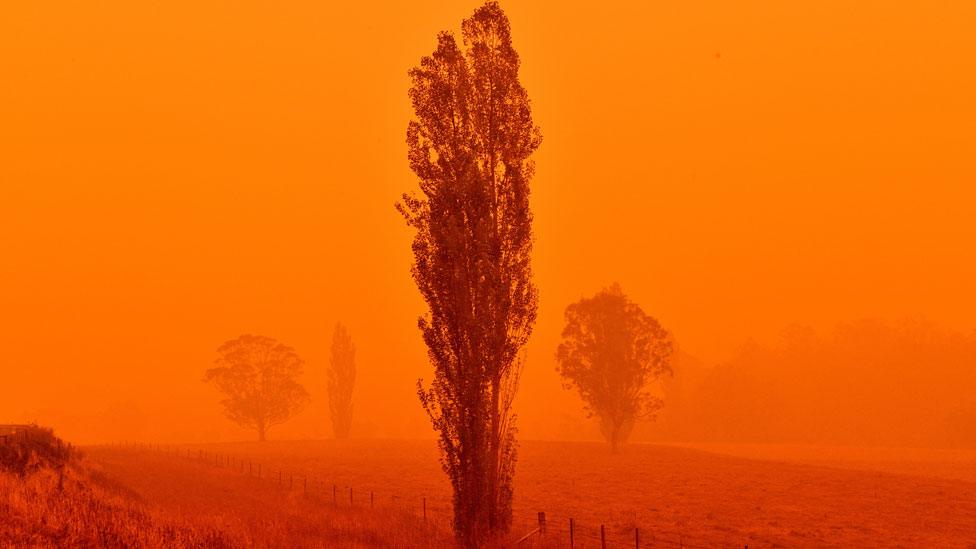
- Published2 January 2020
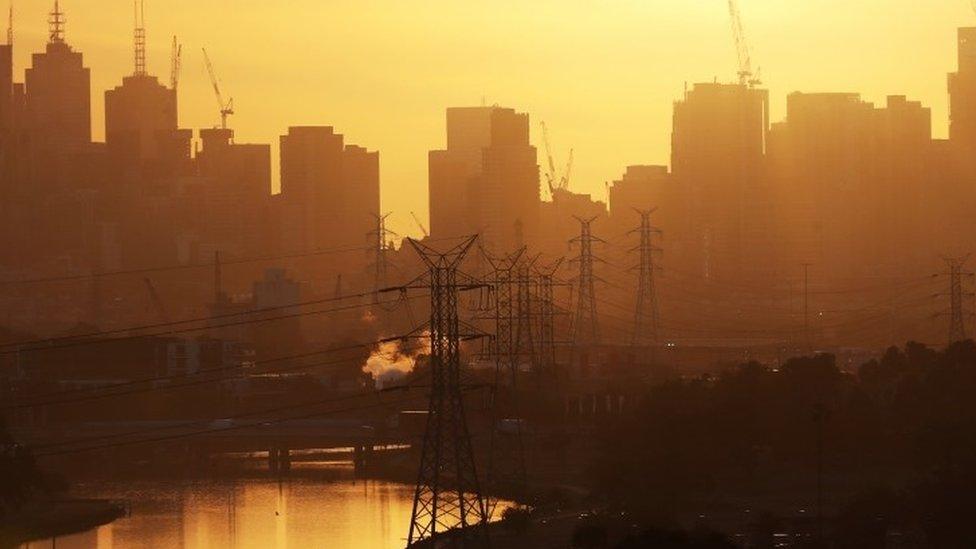
- Published22 November 2019
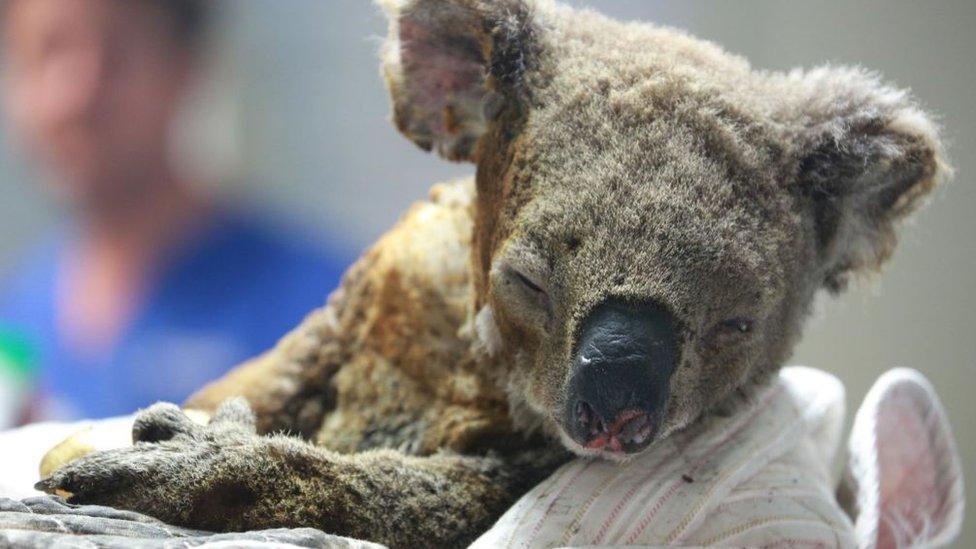
- Published11 November 2019
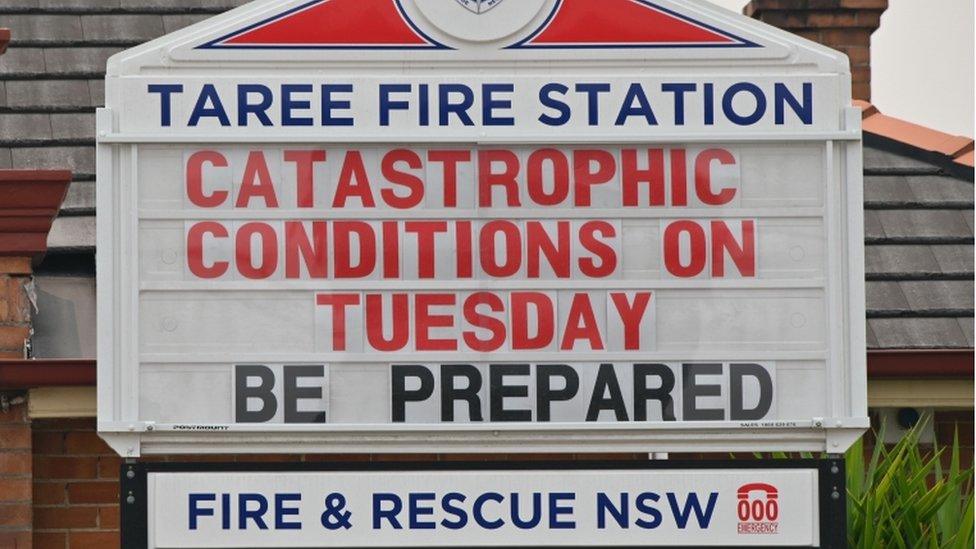
- Published17 November 2019
